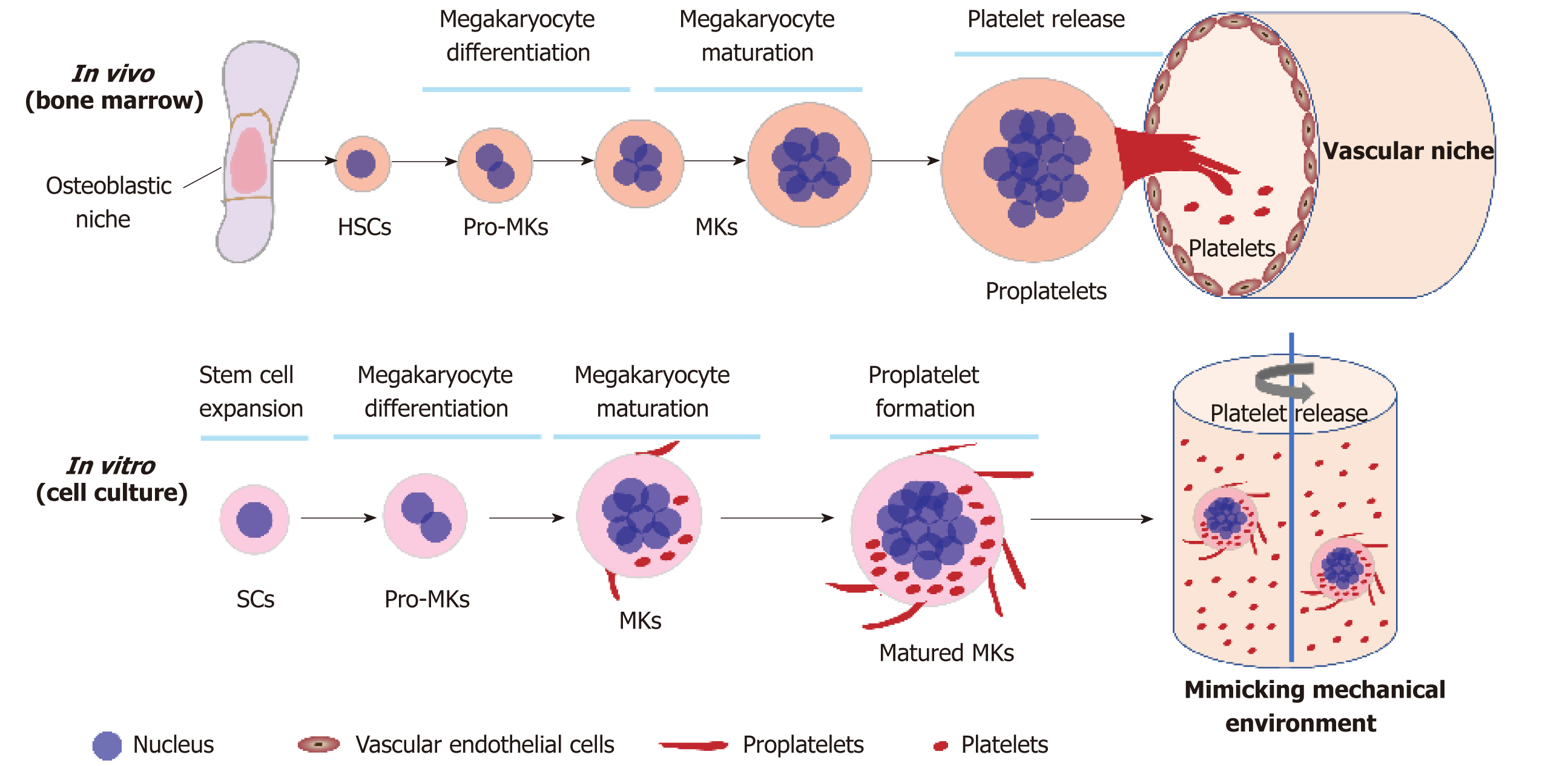Copyright
©The Author(s) 2019.
World J Stem Cells. Sep 26, 2019; 11(9): 666-676
Published online Sep 26, 2019. doi: 10.4252/wjsc.v11.i9.666
Published online Sep 26, 2019. doi: 10.4252/wjsc.v11.i9.666
Figure 1 Overview of megakaryopoiesis, proplatelet formation and platelet release.
In vivo, bone marrow is located within the trabecular bones, where the hematopoietic stem cell (HSC) undergo the process of megakaryocyte (MK) differentiation and MK maturation under the control of thrombopoietin. During maturation, MKs migrate to bone marrow sinusoids and form proplatelets. Proplatelets elongate through the vascular endothelium into the vessels, and proplatelet terminal ends are released into the bloodstream by blood shear forces, forming platelets. In vitro, HSC-derived CD34+ cells or pluripotent stem cell are first expanded in vitro and then differentiate into the megakaryocytic lineage. Once differentiated, immature MKs undergo the polyploidization process via inducing endomitosis to increase the number of DNA content to 16-128 N. During the process of polyploidization, some extended proplatelets are formed and released in high ploidy MKs in culture. To increase the efficiency of platelets, MKs extend proplatelets into the bioreactor, with perfused culture medium mimicking blood flow.
- Citation: Lei XH, Yang YQ, Ma CY, Duan EK. Induction of differentiation of human stem cells ex vivo: Toward large-scale platelet production. World J Stem Cells 2019; 11(9): 666-676
- URL: https://www.wjgnet.com/1948-0210/full/v11/i9/666.htm
- DOI: https://dx.doi.org/10.4252/wjsc.v11.i9.666









